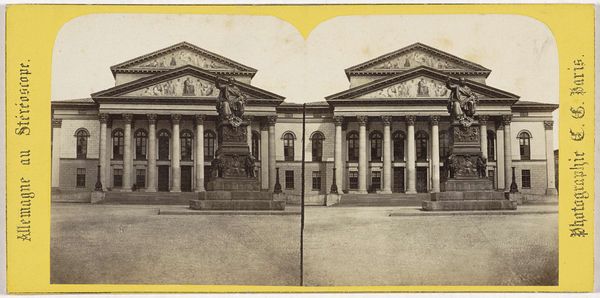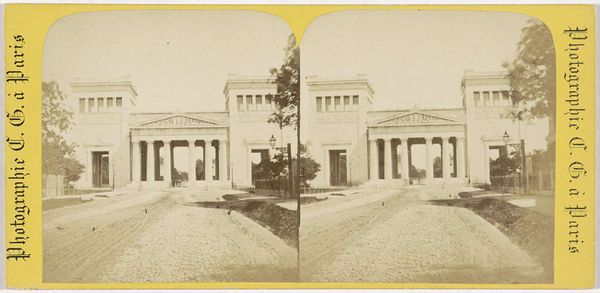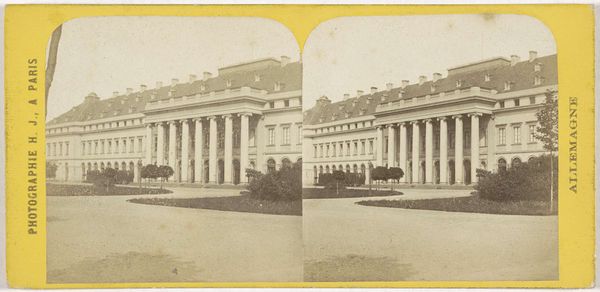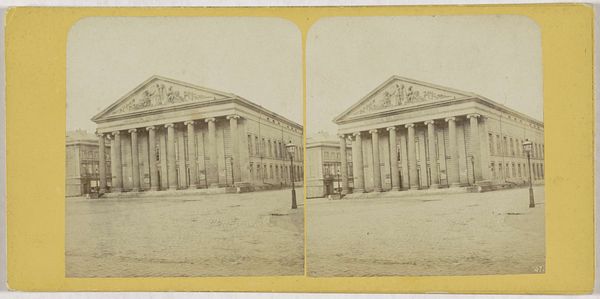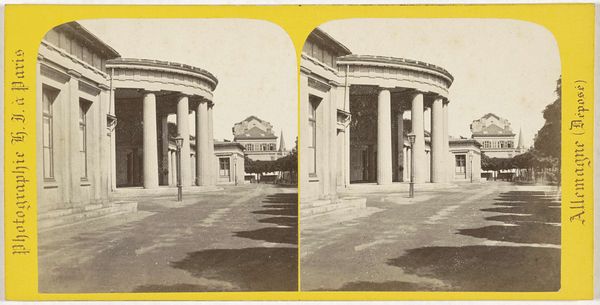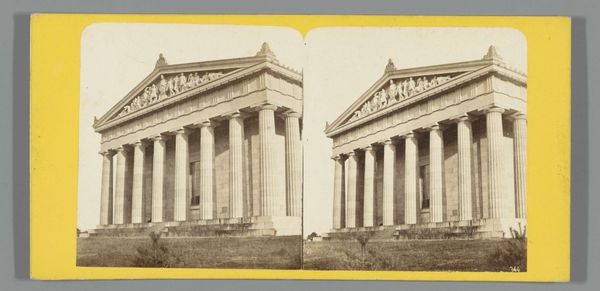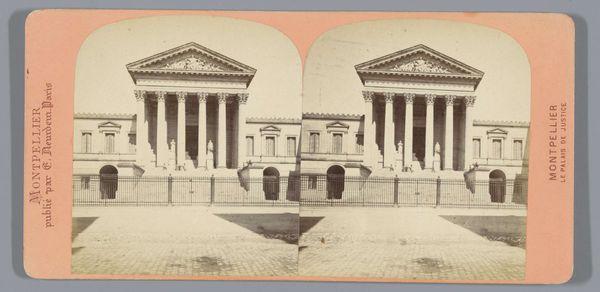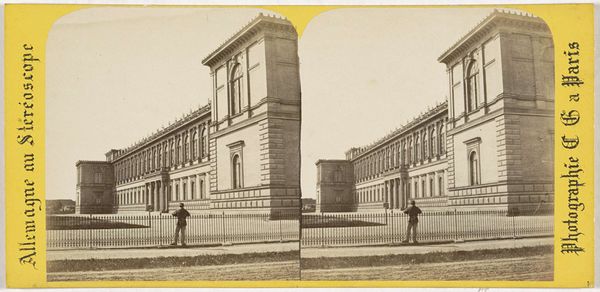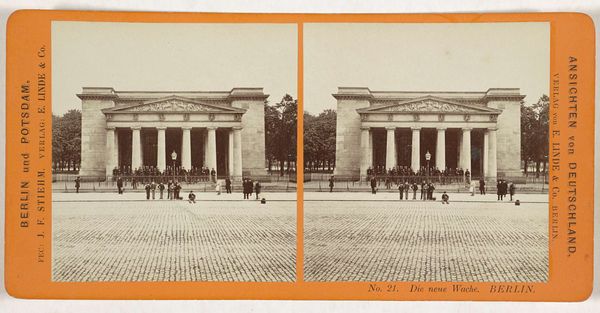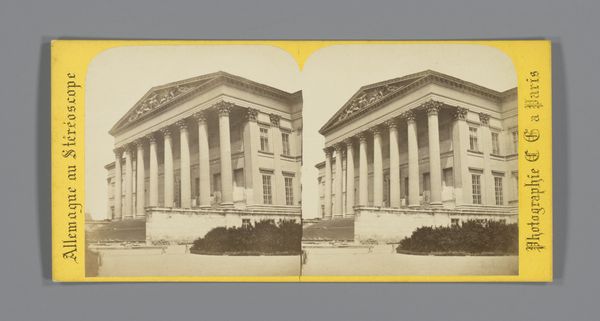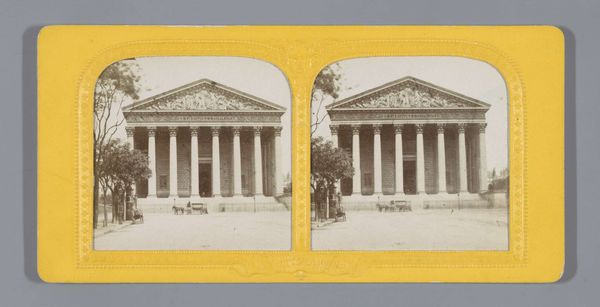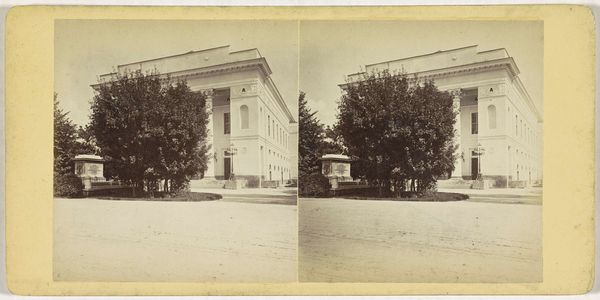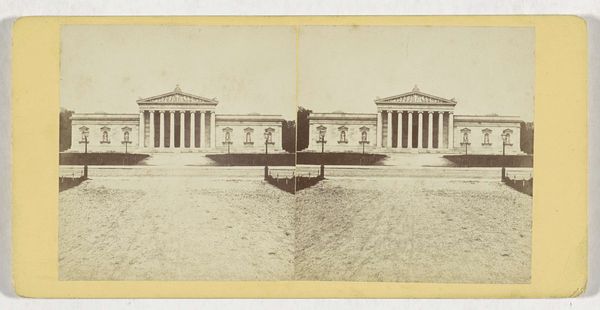
Dimensions: height 84 mm, width 175 mm
Copyright: Rijks Museum: Open Domain
Curator: I'm intrigued by this albumen print from 1868 by Charles Gaudin, called "Exterieur van de Glyptothek in München." It's a stereoscopic view of the Glyptothek museum. Editor: Oh, wow, it feels very...stark. Like a stage set for a tragedy. The muted tones and rigid architecture give off such a strong, imposing atmosphere. And is that a solitary figure standing in front? It intensifies the sense of lonely grandeur. Curator: It is, indeed! A single figure gives a sense of scale, doesn't it? Gaudin's captured this in stereo, mind you – a popular format at the time, meant to give depth and a sense of being there. Editor: That explains the duplicate view, cleverly done! This whole scene reads as more than just a building's facade. Look at those evenly spaced busts on the frieze, mimicking figures in the Parthenon frieze. Are we meant to see some parallel between the Greek reverence of idealized forms of beauty and this era's? Curator: I think you might be right on that point! Neoclassicism, remember, looked to antiquity for ideals. That Doric order, the perfect symmetry…all speaking of order, reason, and a specific cultural lineage that 19th-century Europe was keen to align itself with. It’s about making a statement. What I find fascinating, though, is how photography was used to disseminate these statements. Imagine how many people, from the comfort of their homes, got to "visit" this grand museum! Editor: That is remarkable – mass-produced virtual travel! This sterile clarity speaks volumes of the era's self-conception and aspiration for cultural legitimacy. The rigid aesthetic reflects an inner psychological rigidity of the time as well, an externalisation of deeply felt principles and ideals. Curator: Well, this photograph now makes me wonder about the figures of cultural identity and how they change and evolve, particularly in a time like our own where there's such interest in cultural identities from different communities. Editor: Absolutely. It prompts us to consider how those grand narratives play out now and how we might represent collective memory with greater inclusivity and sensitivity.
Comments
No comments
Be the first to comment and join the conversation on the ultimate creative platform.
